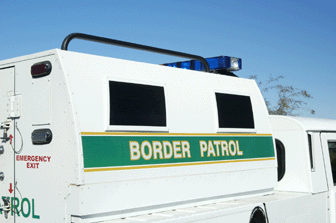|
US Immigration
|
|
 |
|
|
|
Updated 2/12/2008 |
|
IMMIGRATION /
By MARIA AGUILA, Esq. |
|
Student Visas: M1 Vocational Visa Basics
|
Who is Allowed to Study in the United States?
A nonimmigrant is someone who temporarily comes to the United
States for a specific purpose. People who wish to pursue
full-time academic or vocational studies are usually admitted to
the United States in one of two nonimmigrant categories. The M-1
category includes students in vocational or other nonacademic
programs, other than language training. The F-1 category
includes academic students and students in language training
programs.
How Do I Apply if I am Outside of the United States?
You first must apply to study at an USCIS-approved school in the
United States. When you contact a school that you are interested
in attending, you should be told immediately if the school
accepts foreign national students. If you are accepted, the
school should send you USCIS Form I-20 M-N/ID (Certificate of
Eligibility for Nonimmigrant (M-1) Student Status - For
Vocational Students). If you require a visa, then you should
take the USCIS Form I-20 to the nearest U.S. consulate or
embassy to obtain a student visa. Only bring the USCIS Form I-20
from the school you plan on attending for visa processing at the
U.S. consulate. You must also prove to the consulate that you
have the financial resources required for your education and
stay in the United States.
|
|
|
|
|
|
How Can I Change My Nonimmigrant Status to Become a
Student if I Am Already in the United States?
You must be in valid nonimmigrant status in order to apply for a
change of status to a student visa and generally, you must be
eligible to change status under immigration laws. If you are not
eligible to change status due to the type of your nonimmigrant
visa, there are certain waivers you may qualify to apply for.
Please consult an immigration attorney for more information.
To change status, you first must apply to study at an
USCIS-approved school in the United States. When you contact a
school that you are interested in attending, you should be told
immediately if the school accepts foreign national students. If
you are accepted, the school should send you USCIS Form I-20
M-N/ID (Certificate of Eligibility for Nonimmigrant (M-1)
Student Status - For Vocational Students).
|
 |
|
You must submit this form, your I-94 (Arrival-Departure
Record), and a completed USCIS Form I-539 (Application
to Extend/Change Nonimmigrant Status) to the USCIS. You
must also prove that you have the financial resources
required for your education and stay in the United
States.
Can I Bring My Spouse and Children with Me to
the United States?
Your spouse and unmarried children under 21 years of age
may come with you to the United States in M-2
nonimmigrant status. They should go with you to the U.S.
embassy or consulate when you apply for your student
(M-1) visa. They should be prepared to prove their
relationship to you. If your spouse or children are
following to join you at a later date, they should
provide the U.S. embassy staff with a copy of your USCIS
Form I-20 ID and proof of their relationship to you. The
M-2 status of your family will be dependent upon your
status as the M-1 vocational student. This means that if
you change your status, your family must change their
status as well. If you lose your status, your family
will also lose their status
How Long Can I Stay in the United States?
You are allowed to stay in the United States for one
year or for as long as you are enrolled as a full-time
student in a vocational program (plus thirty days to
prepare to leave the country), whichever is shorter. You
should be allowed to stay in the United States 30 days
beyond the departure date on your Form I-94
(Arrival-Departure Record) and USCIS Form I-20 ID
(Certificate of Eligibility for Nonimmigrant (M-1)
Student Status - For Vocational Students), as long as
your stay does not exceed one year.
You may also apply to stay in the country after the
completion of your studies to pursue practical training.
If approved, you will be allowed to have one month of
practical training for every four months of study you
completed. You will be limited to six months total
practical training time.
How Can I Extend My Stay as a Student in the
United States?
You should apply to extend your stay in the United
States if your studies will take longer than the date
listed on your I-20 ID or your vocational program lasts
longer than a year. You should complete USCIS Form I-539
(Application to Extend/Change Nonimmigrant Status) and
send it to USCIS at least 15 (but not more than 60) days
before your authorized stay in the country expires. You
should also submit your USCIS Form I-20 ID to the USCIS
at the same time.
Will I Be Able to Work?
You and your spouse and children may not accept
employment. However, you may apply for practical
training after you complete your studies. If approved,
you will be allowed to have one month of practical
training for every four months of study you have
completed. You will be limited to six months total
practical training time. You must also submit USCIS Form
I-765 (Application for Employment Authorization), and
your I-20 ID, signed by the designated school official
(DSO). You should send your application to USCIS no more
than 60 days before your student status expires and no
later than 30 days after your studies are completed. You
may also wish to discuss practical training with the
appropriate officials at your school.
Can I Travel Outside of the United States?
Students may leave the United States and be readmitted
after temporary absences. When making your travel plans,
please remember that you must be a full-time student to
keep your M-1 student status. Upon your return to the
United States, you should provide immigration inspectors
with:
1. A valid passport.
2. A valid M-1 entry visa stamped in the passport (if
necessary). A current USCIS Form I-20 ID signed by your
designated school official (you should have the
designated school official sign your USCIS Form I-20
each time you wish to temporarily travel outside the
United States).
3. A new USCIS Form I-20 M-N/ID if there have been any
substantive changes in your course of study or place of
study.
4. Proof of your financial support.
|
Disclaimer: This article presents general information about student visas
and is not intended as legal advice, nor should you consider it as such. You
should not act upon any information contained in this article without
seeking professional advice from a lawyer licensed in your state or country.
|
MARIA AGUILA

|
|
|
|
|
|
|
|
|
|
|








